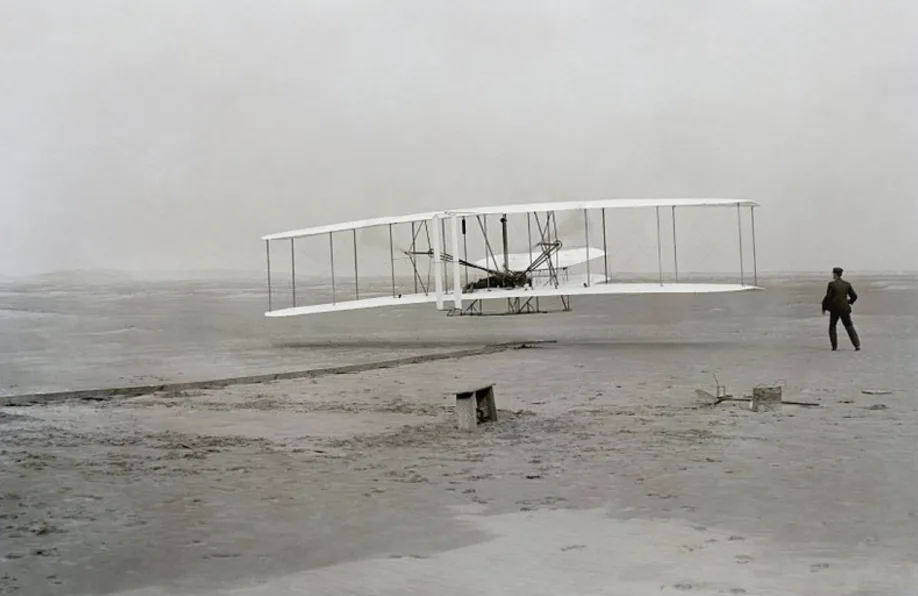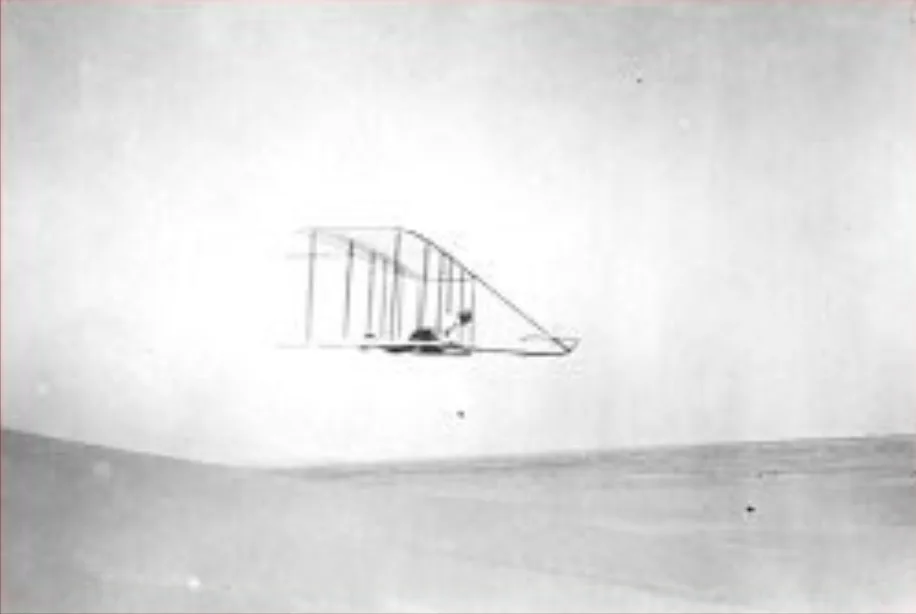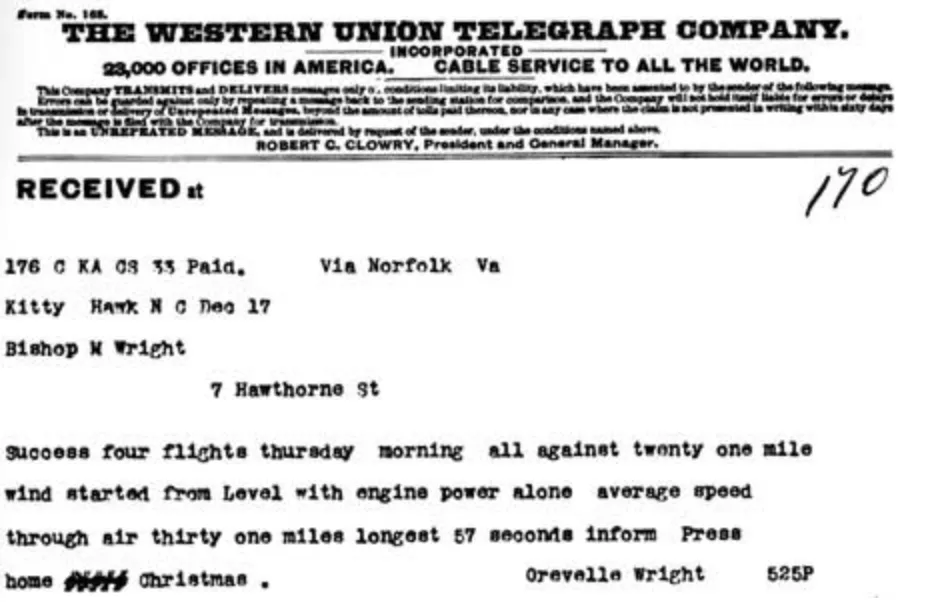
Wright brothers telegraphed the U.S. Weather Bureau to plan 1st flight locale
This Day In Weather History is a daily podcast by Chris Mei from The Weather Network, featuring stories about people, communities and events and how weather impacted them.
--
Today, we're going to highlight the relationship that Wilbur and Orville Wright established with weather authorities to assist in their initial flight tests of the first fixed-winged aircraft.
On Dec. 17, 1903, the Wright brothers took flight with their first powered aircraft in Kitty Hawk, N.C.
The brothers took their manned gliding experiments to Kitty Hawk because the mid-Atlantic coast had stable breezes and soft sandy surfaces, perfect for landing those initial tests.
The Wrights determined the best location for their initial test flights by writing to the Weather Bureau, now known as the National Weather Service.
Joseph J Dosher, who worked at the Weather Bureau, promptly replied with the following response:
"Mr Wilbur Wright Dayton Ohio
Dear Sir,
In reply to yours of the 3rd, I will say the beach here is about one-mile-wide clear of trees or high hills, and islands for nearly 60 miles south. Conditions: the wind blows mostly from the north and northeast September and October, which is nearly down this piece of land. Giving you many miles of a steady wind with a free sweep. I am sorry to say that you could not rent a house here. So you will have to bring tents. You could obtain frame.
The only way to reach Kitty Hawk is from Manteo Roanoke Island, N.C., in a small sail boat. From your letter I believe you would find it here like you wish. Will be pleased at any time to give you any information. Yours very respectfully
JJ. Dosher"
The brothers' first flight lasted 12 seconds and flew 120 feet. That day, they flew the glider three more times. Wilbur flew for the longest time that day, lasting 59 seconds over a distance of 852 feet.

Wilbur Wright testing a glider in Kitty Hawk, Oct. 10, 1902. Courtesy: National Weather Service
Once the flights were completed, Orville walked to the Kitty Hawk Weather Office to send a telegraph to his father, telling him about the day's successes.

The telegraph sent by Orville Wright from the Weather Bureau Office in Kitty Hawk. The message informs their father about the successful flights of Dec. 17, 1903. Courtesy: National Weather Service
Listen to today's episode of "This Day In Weather History" to hear more about the lead up the first aviation weather forecast, which occurred on Dec. 1, 1918.
The relationship between the National Weather Service and the aviation industry continues to be strong, providing daily weather forecasts for 537 airports.
Subscribe to 'This Day in Weather History': Apple Podcasts | Amazon Alexa | Google Assistant | Spotify | Google Podcasts | iHeartRadio | Overcast'
Thumbnail courtesy: National Weather Service





